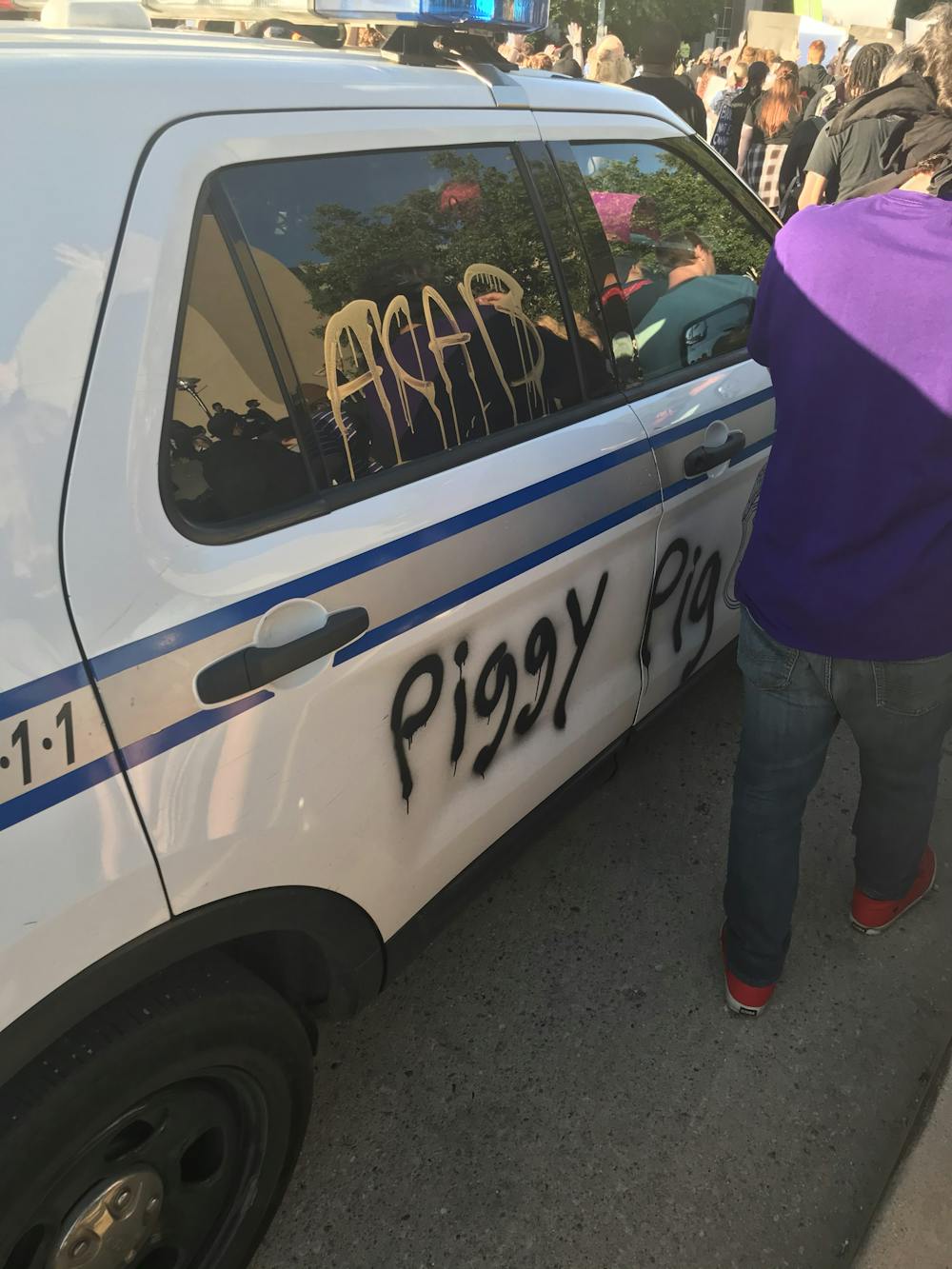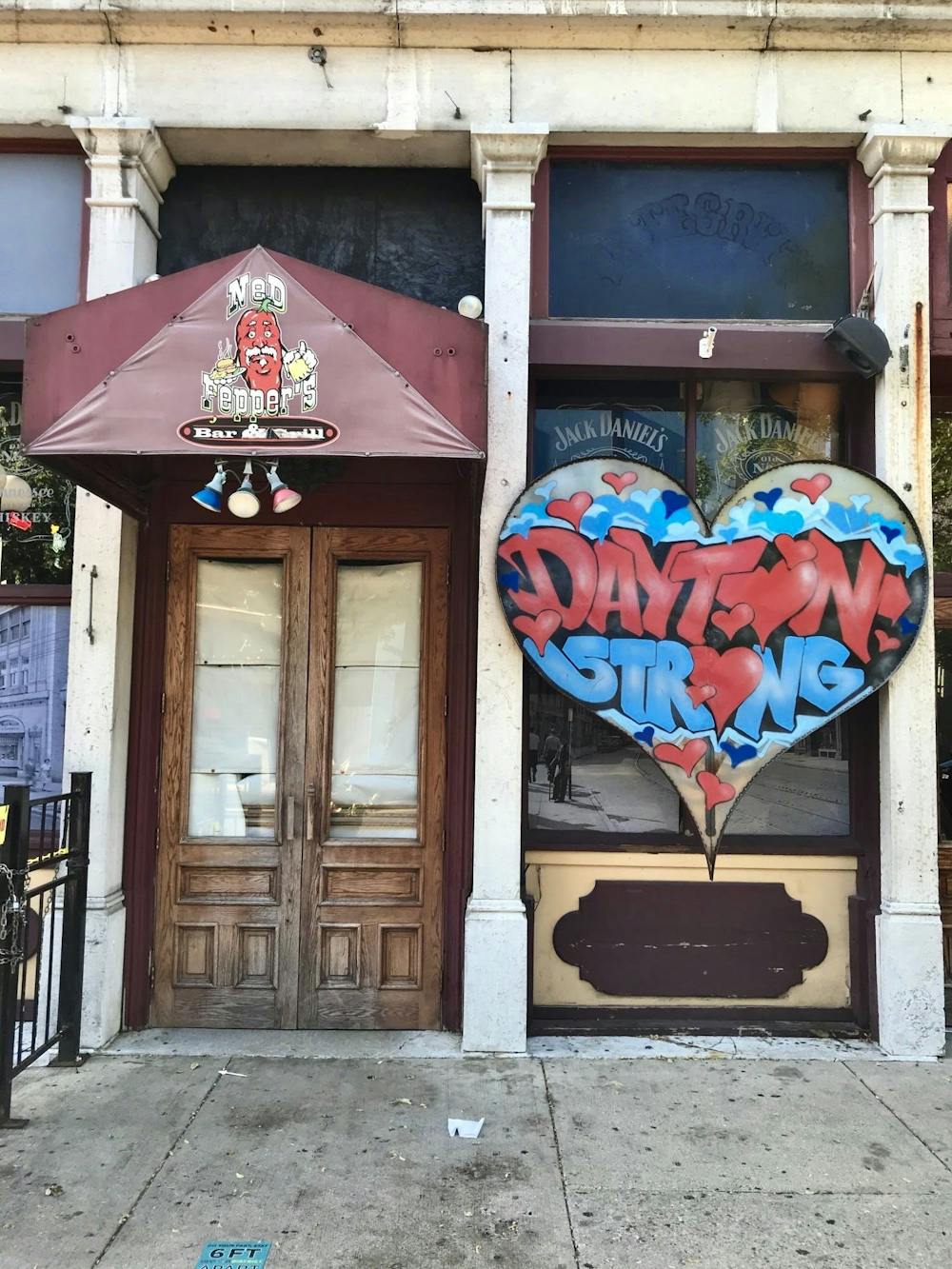On Aug. 4, 2019, a mass shooting broke out in the historic Oregon District of Dayton, Ohio. Nine were killed and 17 more were injured in front of Ned Peppers Bar. Police officers fatally shot the shooter in less than a minute.
Connor Betts, the 24-year-old shooter, was not the kind of privileged white teenager that you could defend with a cry of “but he was such a good kid!” His former high school classmates distinctly remember Betts keeping a “hit list” containing the names of male students he wanted to kill and female students he wanted to rape.
Local police were made aware of his behavior, and he was removed from the school for a year. Despite his extreme misogyny, obsession with violence, and police record, Betts was still able to purchase a collection of guns with ease.
The night that Connor Betts murdered nine people, including his own sister, he was carrying a backpack with over 100 more rounds inside it. In 30 seconds, the officers who regularly patrolled the Oregon District shot and killed Betts outside of the bar he was terrorizing. Without the quick work of Dayton Police, the already too-high death toll would have been appallingly higher.
For ten months after that night, Dayton police officers were all but idolized by those they protected. Every small business in the Oregon District, from the local movie theater to the Exotic Fantasies sex shop, has proudly displayed a “Thank you, Dayton Police” sign at some point or another.
On May 30, that same police force assaulted Dayton citizens with tear gas, flashbangs, rubber bullets, and other intimidation tactics — all within a few blocks of the Oregon District.
***
May 30 marked the first day of Black Lives Matter protests in Dayton.

Around 7 p.m. that evening, protesters steadily streamed into downtown Dayton’s courthouse square. The crowd felt both ready and wary, as a protest around noon in the same area began with peaceful speeches and ended with pepper balls fired by the police. There was an uncertain energy in the air, buzzing with the intentions of people eager to make change but unsure of what to do.
As protesters greeted their coworkers, neighbors, and old friends, the crowd began to shift, and the amorphous gathering turned into a marching movement. The well-known chants of “no justice, no peace” and “hands up, don’t shoot” rippled throughout the group. Protesters moved freely from one block to the next, as police vehicles had blocked off most of the traffic in a span of a few blocks.
The police were silent, saying nothing, doing nothing, simply watching protesters at every street corner and intersection. Likewise, the protesters didn’t interact with the police. After all, the goal was to elevate Black voices, not antagonize law enforcement.

Dayton citizens gathering outside of the courthouse for a 7 pm protest.
Katie Heinzer / The Daily Princetonian

This was made very clear by the leader of the protest, a young woman with a megaphone who took charge when the crowd came to a stop a few blocks from the courthouse. The mass gathered around her.
Of course, there were those who didn’t agree with her expressly nonviolent methods. Some protesters accused her of reducing the movement to something palatable for the cops. Some told her that her goals were idealized and unrealistic, that there wouldn’t be change without the violence that she discouraged. Whether these accusations were true or not, she met them authoritatively while maintaining her platform of peace.
I joined this protest not knowing quite what to expect, but I was floored by the community that came together. Complete strangers were adjusting each other’s bandanas and clearing a space next to themselves for others to occupy. Water bottles were handed out to those who showed up unprepared. A few of the more seasoned protesters caught our attention by instructing the rest of us on how to douse our masks with water, run up to a tear gas canister, and roll it away from the crowd if things were to escalate.
As the crowd stood at the edge of Sinclair Community College’s campus, where the noon protest had passed through, the reports of tear gassing felt like a far-off cautionary tale to me. Whatever had occurred earlier in the day had to have been a misunderstanding of some sort; Dayton police officers wouldn’t resort to violence en masse like that. This was Dayton, a resilient place where city officials, citizens, and cops alike all rose together and pressed for social change when necessary.

A Dayton Police car vandalized during the day's earlier protest.
Katie Heinzer / The Daily Princetonian
My suburban white delusions were shattered when the first tear gas canister was hurled into the crowd.
A cacophony of screams and confused speech broke out as people scattered, scrambling back to the sidewalk or up the concrete ledges surrounding the community college building. After the initial shock, protesters returned to the street demanding to know what the necessity was for the tear gas. They were met with more of it.
Canister after canister was callously tossed into the street as the boldest among us kicked or threw them back at the cops. The rest of us coughed and sputtered a safe distance away, where yet another wave of community selflessness moved through the group. Gallons of milk were passed around and dumped into the cupped hands of those who were bombarded by the tear gas. A girl holding a spray bottle saw my face and beckoned me over, relieving the pain with a mixture of baking soda and water to neutralize the gas.
While roughly half of us were recovering, the other half was now rightfully furious. Rocks and water bottles began to fly through the air at the police, who were dressed head to toe in protective equipment and hiding behind their riot shields. The spray painted police car, among others, was kicked at, scraped up, and jumped on.
The police, after provoking the protesters with their tear gas, decided to take it one step further. An impassable wall of officers formed in the middle of the street as they began to shoot rubber bullets at protestors who remained in the street — a street that was blocked off for the very purpose of protesting.
To round out their display of excessive force, the police began tossing out flashbangs — stun grenades that render victims temporarily blind and deaf — to dispel the protesters who weren’t already running like hell in the other direction.

Police officers fire rubber bullets at protestors engulfed in tear gas.
Katie Heinzer / The Daily Princetonian
No one could piece together what happened, what exactly had spurred this action by the police. Just moments before the tear gassing began, protestors were doing exactly what they had planned the entire time: waving signs and chanting. It wasn’t until after the police took action that projectiles began flying.
And even if a lone water bottle had been thrown at the officers or their vehicles, does that warrant assaulting an entire crowd in full force? The truth of the matter is that this protest, like thousands of others across the country, did not show a hint of violence until the police officers incited it themselves, on an overbearing scale.
Dayton police officers know what dangerous, reckless force looks like — they saw it in Connor Betts. They used careful and focused tactics to take down a white terrorist without causing collateral damage. But in the face of peaceful Black protesters, officers took their Blackness as a signal of violence, disrespect, and “thuggishness.”
They responded with a gross display of power intended to beat Black protesters into accepting the multifaceted injustice that America has handed to them. They attempted to shut down voices that have been silenced for too long and refuse to back down in the face of police brutality today.








